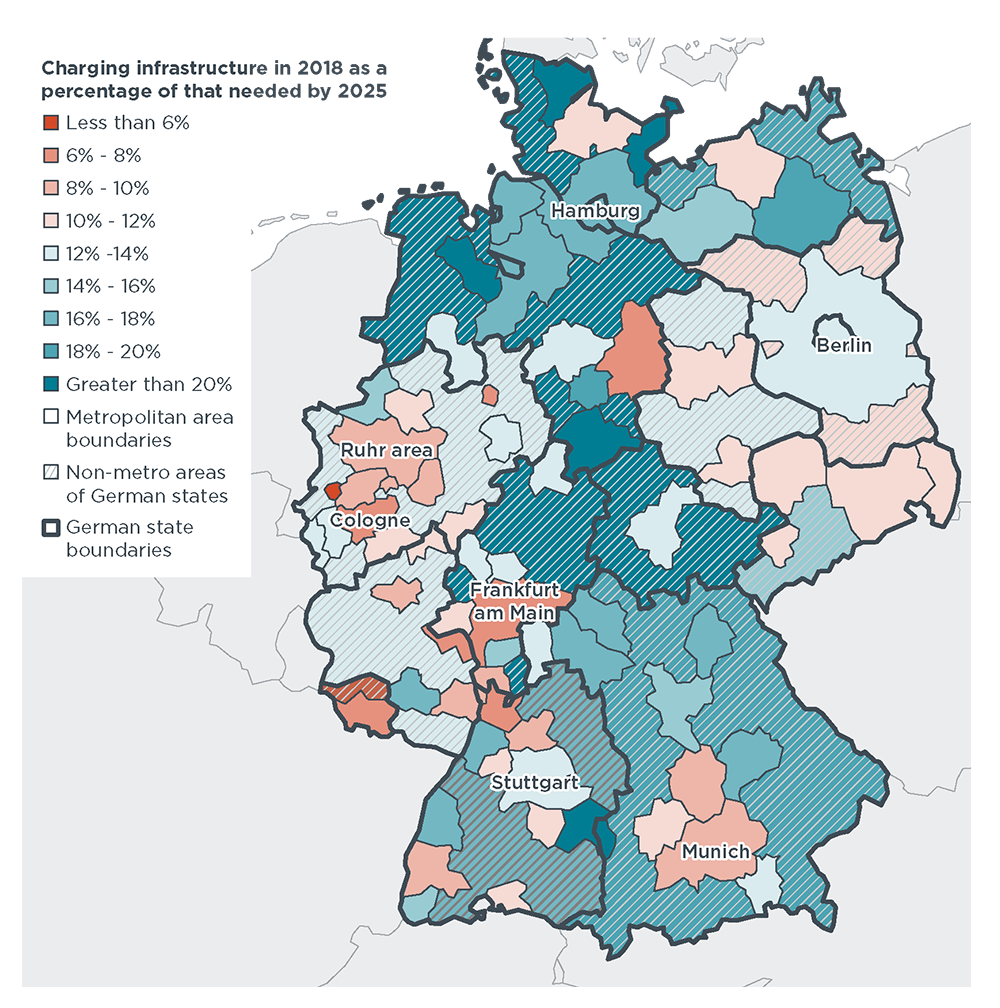To support 5.7 million to 7.4 million electric vehicles in Germany, representing a market share of 35% to 50% of passenger vehicle sales, 180,000 to 200,000 public chargers will be needed by 2025, and a total of 448,000 to 565,000 chargers will be needed by 2030. Chargers installed through 2018 represented 12% to 13% of 2025 charging needs, and 4% to 5% of 2030 charging needs. These projected needs are approximately half of Germany’s announced goal of 1 million public chargers by 2030, although for fewer vehicles than government targets.
Affluent areas with higher uptake and metropolitan areas show the largest charging gap. The affluent areas where most electric vehicles are now leased or sold show the greatest increase in need for charging. In less affluent areas, the increased need will mirror affluent areas as electric cars move to the secondary market. Lower home charging availability in metropolitan areas contributes to an increase in need as well. Despite most metropolitan areas tending to have a larger charging gap than nonmetropolitan areas, the need remains great in less affluent rural areas, which will require equal access to electrification.
More vehicles can be supported per charger as the market grows. The analysis projects the ratio of electric vehicles per normal speed charger will rise from nine in 2018 to 14 in 2030. Battery electric vehicles (BEV) per DC fast charger will increase from 80 BEVs per fast charger to more than 220 vehicles per fast charger. Associated trends over this time include an expected decline in the availability of home charging as more electric vehicles are owned by those without off-street overnight parking, better utilization of public chargers, and an increase in charging speed. 
Post time: Apr-20-2021
